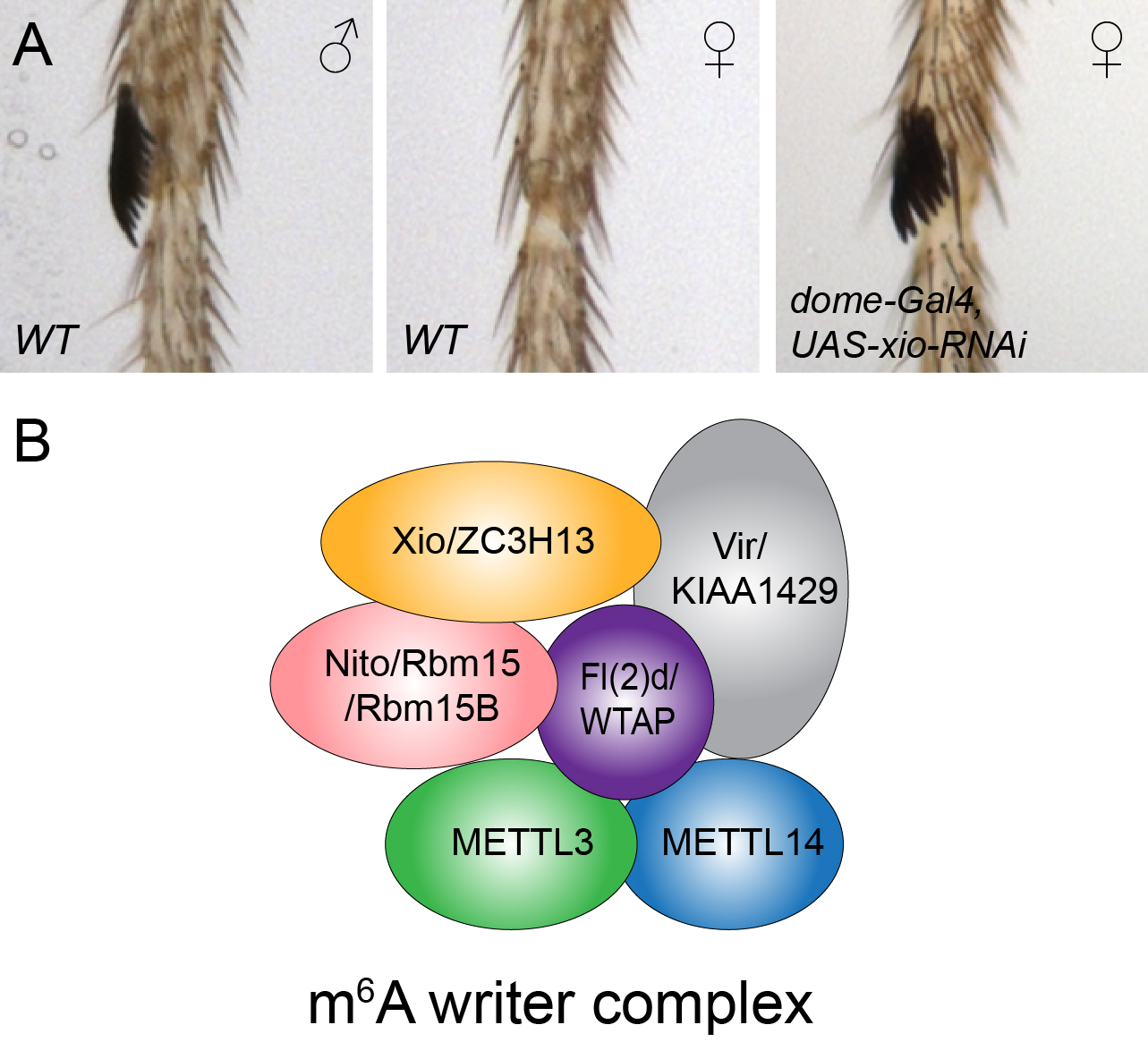A new component of the N6-methyladenosinemethyltransferase complex and Drosophila sex determination pathway
RNAs contain over 100 types of chemical modifications, and N6-methyladenosine (m6A) is the most common internal modification in eukaryotic mRNA.m6Aregulates various aspects of RNA metabolism, such as splicing, stability, folding, export, translation, and is involved in numerous key biological processes, such as development, disease, stem cell differentiation, immunity, and behavior. In Drosophila, m6A is specifically required for sex determination by modifying the pre-mRNA of Sex-lethal (Sxl), the master sex-determining gene, and facilitating its alternative splicing.
m6A is installed by a large methyltransferase complex called the m6A “writer”. The known writer complex subunits include METTL3, METTL14, WTAP/Fl(2)d, VIRMA/Vir, and Rbm15/Nito. Since mutants for these genes show unambiguous sex transformation phenotypes, Drosophila sex determination provides a unique system to screen for new components in the m6A pathway.
Using this system, the research groups led by Dr. Dong Yan from Key Laboratory of Insect Developmental and Evolutionary Biology, CAS Center for Excellence in Molecular Plant Sciences/Shanghai Institute of Plant Physiology and Ecology (SIPPE), Chinese Academy of Sciences and Dr. Norbert Perrimon from Harvard Medical School, Howard Hughes Medical Institute, identified and characterized a newcomponent of the Drosophila sex determination pathwayand RNAm6Amethyltransferase complex.
By mass spectrometry, they identified one protein, CG7358, that interacts with known m6A writer components.AsCG7358 has not been studied before, theyrenamed it Xiong (Xio, Chinese character for maleness) since its loss of function shows female-to-male transformation phenotype.xio encodesa conserved ubiquitous nuclear protein and it colocalizes and interacts with all previouslyknown m6A writer complex subunits.
Loss of xio is associated with phenotypes that resemble other m6A factors, such as sexual transformations, Sxl splicing defect, held-out wings, flightless flies, and reduction of m6A levels. Thus, Xio encodes a member of the m6Amethyltransferase complex involved in mRNA modification. Since its orthologZC3H13 also associates with several m6A writer factors, the function of Xio in the m6A pathway is likely evolutionarily conserved.
This work entitled “Xio is a component of the Drosophila sex determination pathway and RNA N6-methyladenosinemethyltransferase complex” has been published online in PNAS on March 19.
This work was supported by National Natural Science Foundation of China, Shanghai Pujiang Program and CAS.

Figure: (A) Knockdown of xio transforms female flies to male-like. (B) A model of the m6A writer complex comprised of six core components. (Image by Dr. Dong Yan)
CONTACT:
Dr. Dong Yan, Professor
Key Laboratory of Insect Developmental and Evolutionary Biology
CAS Center for Excellence in Molecular Plant Sciences/Shanghai Institute of Plant Physiology and Ecology (SIPPE)
Chinese Academy of Sciences
86-21-54924051
Email: yandong@sibs.ac.cn